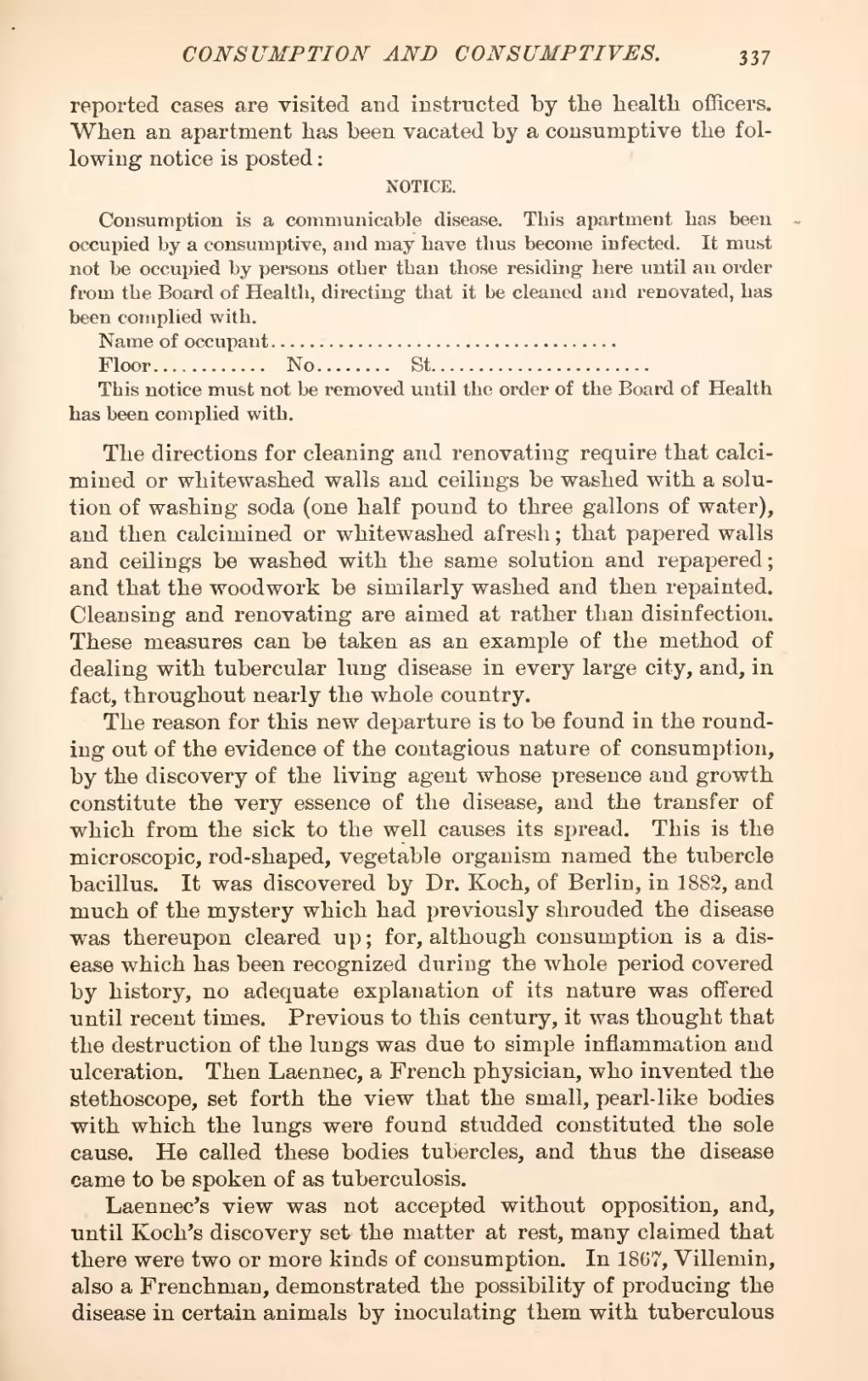reported cases are visited and instructed by the health officers. When an apartment has been vacated by a consumptive the following notice is posted:
notice.
Consumption is a communicable disease. This apartment has been occupied by a consumptive, and may have thus become infected. It must not be occupied by persons other than those residing here until an order from the Board of Health, directing that it be cleaned and renovated, has been complied with.
Name of occupant
Floor NoSt
This notice must not be removed until the order of the Board of Health has been complied with.
The directions for cleaning and renovating require that calcimined or whitewashed walls and ceilings be washed with a solution of washing soda (one half pound to three gallons of water), and then calcimined or whitewashed afresh; that papered walls and ceilings be washed with the same solution and repapered; and that the woodwork be similarly washed and then repainted. Cleansing and renovating are aimed at rather than disinfection. These measures can be taken as an example of the method of dealing with tubercular lung disease in every large city, and, in fact, throughout nearly the whole country.
The reason for this new departure is to be found in the rounding out of the evidence of the contagious nature of consumption, by the discovery of the living agent whose presence and growth constitute the very essence of the disease, and the transfer of which from the sick to the well causes its spread. This is the microscopic, rod-shaped, vegetable organism named the tubercle bacillus. It was discovered by Dr. Koch, of Berlin, in 1882, and much of the mystery which had previously shrouded the disease was thereupon cleared up; for, although consumption is a disease which has been recognized during the whole period covered by history, no adequate explanation of its nature was offered until recent times. Previous to this century, it was thought that the destruction of the lungs was due to simple inflammation and ulceration. Then Laennec, a French physician, who invented the stethoscope, set forth the view that the small, pearl-like bodies with which the lungs were found studded constituted the sole cause. He called these bodies tubercles, and thus the disease came to be spoken of as tuberculosis.
Laennec's view was not accepted without opposition, and, until Koch's discovery set the matter at rest, many claimed that there were two or more kinds of consumption. In 1867, Villemin, also a Frenchman, demonstrated the possibility of producing the disease in certain animals by inoculating them with tuberculous
